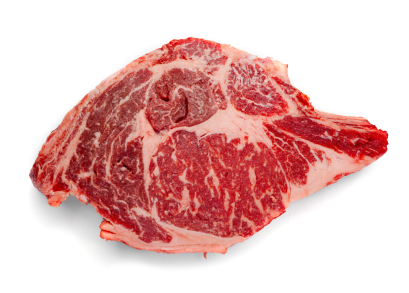Understanding beef – Choosing the right cut makes the perfect meal
DELICIOUS, SUCCULENT BEEF makes a great centerpiece at spring picnics, summer Canada, because arguably the world’s best beef is produced here.
 But to get the best results for your recipe, it’s important to choose the right cut. Here’s a beef primer, just in time for the
But to get the best results for your recipe, it’s important to choose the right cut. Here’s a beef primer, just in time for the
summer grilling season.
Prime rib
Also called standing rib roast, because it “stands” on its rib bones when cooked, prime rib is one of North America’s favorite main dishes. Coming from ribs toward the back of the animal and closer to the loin, prime rib is tender, juicy and so flavorful that the
juices are frequently collected for sauces and gravies.
The beauty of prime rib is that it requires little seasoning. Sure, you can add fancy overnight marinades, but a little salt and pepper works just fine. The longer and slower you roast it, the juicier it is.
Strip steak
Called New York strip, Kansas City strip, strip loin or entrecôte steak, this steak is perfect for grilling With a more dense meat texture than a prime rib or tenderloin, strip steak boasts the perfect ratio of fat marbling and tenderness. It takes well to a grill’s high heat, especially if there’s a lot of marbling. The heat sears the outside, trapping the fat juices inside the steak. When your knife cuts into the strip, the juices just flow out.
The natural beef flavors in strip steak are uniquely nutty, but do not overpower dime-glace and other sauces that can complement a strip. If you want a quick and easy taste enhancer, add a light coating of olive oil, salt, pepper and garlic. The grill will make the garlic crispy, adding a layer of texture complexity to an already juicy strip.
Filet Mignon
This is the most tender beef cut and is characterized as a soft textured steak with less marbling that delivers a unique flavor with an extremely lean and tender eating experience. The filet mignon is elegant and buttery smooth in texture. But a cooked filet has less fat juices than a rib-eye or strip steak, so the best filet mignons are often served with sauces. The lighter beef flavor in filets is a good match for sauces sweetened with ingredients such as balsamic vinegar or apples, or spiced up with chipotle or peppercorns.
Rib-eye
To many, the rib-eye is the king of steak. Cut from the same area that delivers the prime rib, this steak is all about flavor. It is the most marbled of the classic steak cuts.
The rib-eye offers the tenderness of a tenderloin, but the flavor and juiciness characteristic of a prime rib.
Sirloin steak
Sirloin steak can easily be misidentified as rib-eye or strip. The difference is that sirloin steak is much leaner and less expensive than its heavily marbled counterparts. Sirloin steak has no bones and little fat, but is extremely juicy and delicious.
Sirloin is perhaps the most versatile steak option as well, and can be served as a steak, as a roast and in slices on salads. Sirloin is used in Asian dishes, tacos and with flavored cream sauces that range from basil to mushroom. It can be broiled, sautéed or grilled, but this cut needs to be cooked slower with lower heat than other steaks because it has less fat.
source: CostcoConnection

